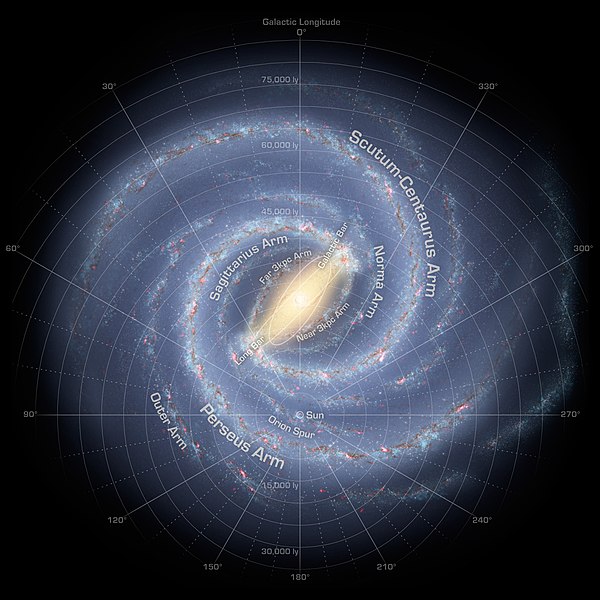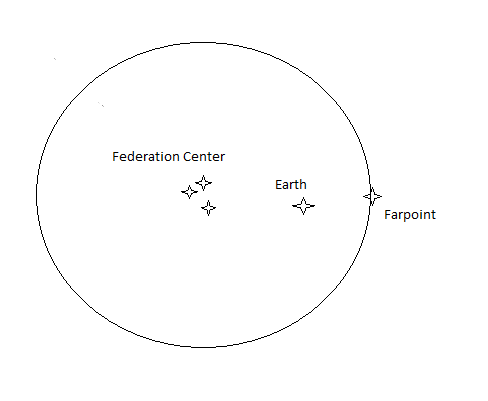Destructionator XII wrote:You say this like I don't know that. I've been using 5000c for the "fast response" number to derive the ship density. The 1000c only comes in for a many month/years journey, which is based on Voyager. There's plenty of examples of "cruising speed" being quite a bit less than that: viewtopic.php?p=3420027#p3420027
Nine of those examples of them are from Voyager, which we know represents "gently" treated warp engines. Four are from Enterprise (NX-01), which we know was initially not even capable of warp factors that later era starships cruised at. Only eight are from TNG, the modern era, and adding in the grossly outlying TOS figure, that brings us up to a grand total of nine figures (out of twenty one) that represent a warp drive as normally used in the Federation. Do you not see how this figure would be biased to slower speeds?
Destructionator XII wrote:It's all moot anyway; even at the fastest sustainable speed presented (~3000c, "Q Who?", "Hope and Fear") traveling 4000 light years, outskirts to center if the length is 8000, is still over a year one way - half the length of the war, and leaving those areas without a ship to support them for over two years.
Are you saying that the Federation's starfleet is so thinly spread out that they cannot even cut fleet numbers across their territory by some percentage to fight a war that
does promise to be a sustained conflict, which would easily net them thousands of ships? The Federation has no business at all spreading out so thinly, as a major attack by one of these fringe major threats you fantasize about would cripple Federation coverage at that point and leave them basically undefended to a follow-up wave. You cannot hold territory against active major threats with such a tenuous fleet. You have to have reserves.
And anyone with a shred of sense would realize that alpha-striking the Changling's homeworld would invite the Jem'Hadar and Vorta to exact bloody revenge for killing their gods. That attack would not destroy the Jem'Hadar or Vorta hatcheries, the actual muscle of the Dominion. Under
no circumstances would the Federation try such a tactic unless they knew they could endure the fallout.
Destructionator XII wrote:That's a completely different beast than the kind of things starships handle. The whole planet had gone to hell - it would have required a lot of ground troops to fix up which the Federation likely doesn't have.
You yourself said "people were actively rescued from the internal strife" - that's the kind of thing a visiting starship could do. 300 goldshirts couldn't possibly restore order on a planet - that'd take a huge ass army.
But they had
twenty years to round up a "huge ass army" to quell the unrest before the fall of the government they were dealing with. The Federation had
plenty of time to get their act together, and the fact that one starship was not enough to quell the unrest is irrelevant.
Let's examine some of the missions that the Enterprise had to conduct:
The Jarada (The Big Goodbye): The whole premise that it is Picard that must give the greeting is silly on its face. Even if a commanding officer must give the greeting, wouldn't appointing a temporary captain who was thoroughly practiced at the Jaradan language to a starship and give the greeting be much more sensible than sending in a captain who had to memorize the greeting by rote? The only reason they use the Enterprise is that, yes, they are that poor in ships, and yes, it did take this long to do something that they should have done at the first opportunity.
Angel One (Angel One): A world within the usual stomping grounds of the Federation, and they don't even have an extradition treaty with Angel One. If they did, the Angelites could stuff it in Picard's face and say, "get Ramsey and the others off our planet!" Because one of the first things you establish in formal relations is how to handle outsiders who aren't welcome for one reason or another. This is another thing that the Federation should have done long ago if it was really spread out over one warp-year, but didn't.
The Daledians (The Dauphin): Formal relations aside, knowing that one of the species within easy reach of the Federation are shape-shifters is a rather important thing to miss about a species for a civilization founded upon cultural understanding and science.
Angosia III (The Hunted): A candidate for entry into the Federation, yet no one knew that the penal colony their moon held not inmates but veterans of one of their wars, considered unfit for reentry into society. Wouldn't the Federation check to see if the colony was actually holding proper convicts, rather than (potentially) political prisoners?
Ventax II (Devil's Due): Although no one on Ventax II thought the ancient legend important before pseudo-Ardra's arrival, Picard saw the fundamental flaw easily enough: someone can masquerade as the entity Ardra and effectively seize control of the planet and all its assets. There's also the point that under no treaty would a planet simply be allowed to seize a starship that happens to be orbiting the planet just because some law originating on the planet tells them they could — "Federation starships are the exclusive property of the Federation, and no law made by the Ventaxian government laying claim to one will be recognized." Under any sane treaty, Ardra wouldn't have a legal leg to stand on in claiming the Enterprise. After all, this his hardly the first time that the Federation has encountered species who have tried to apply their laws on starships that were never a part of them. The only reason Ardra would be able to succeed is if no formal treaty exists and thus the only remedy is to prove that pseudo-Ardra was indeed pseudo by arbitration.
Melona IV (Silicon Avatar): Why are they only getting around to colonizing this place
now, if it is within easy reach of the Enterprise (having visited the outskirts of Cardassian territory with a Bajorian refugee camp on it just the episode before)? And they knew there was a life-sucking crystal buzzing about and able to eat life on an entire planet, and no one thought that it might attack again?
Lyaarans (Liaisons): Again, easy reach of the Enterprise, yet the Federation doesn't even know basic things about their psychology.
Kesprytt (Attached): The Kes got this far into the Federation membership process and
no one noticed their rampant racial paranoia?
This all stinks of the frontier, where even
basic knowledge of the societies and cultures under the care of the Federation is severely lacking. Either that, or they are only now getting around to establishing relations with these worlds recently (as aluded to by the Romulans talking about Federation expansion). Everything I see screams that the frontier is within half a warp year of the Federation core. One would think that proximity to the core of the Federation would mean better protection, but half a warp year seems to be the limit of "fast response," as responding to threats that are known about are missed out here with embarassing regularity. The Federation has no business at all extending beyond that.
Destructionator XII wrote:Indeed, that's quite reasonable. This is Star Trek we're talking about - that kind of stuff shows up every other week! Often brand new aliens that we've never heard up until now too; hell, they are brand new almost every week too. Some of those aliens prove to be a serious threat one week, but we rarely, if ever, hear of them again. Do they just pop up once then hide for the rest of eternity? Or do they pop up, but far from our main characters (who have moved on to new things), or are kept at bay by threat of Starfleet?
Bollocks. The difference is that every one of those threats actually have some
evidence that they exist: they popped up
at least once. The number of threats that
might exist but
don't is very very much larger than those that do. Under NO theory of evidence do I have to accept the existence of things that do not have a shred of evidence supporting their existence, no matter how powerful those that
do turn up turn out to be.
Also, a "serious threat" that you foil once and never hear of again is a contradiction in terms. A
real serious threat would affect Federation policy in noticeable ways. Take the Conspiracy aliens: infecting the core of the Federation, yet after Conspiracy no one ever hears of them again. We get no indication of their true strength, and no one hears of them again even to the end of DS9. For all we know, they blew their wad trying to infiltrate the Federation (the biggest boy in the neighborhood) and got thoroughly smacked down into obscurity. They give every indication of being no longer a major threat. The Borg, on the other hand, is a real major threat because we actually get some idea of how large their territory is, how strong they are, and they attack multiple times. Its presence spawned the development of the Defiant class. But we
don't get frequent neck checks to guard against the Conspiracy aliens. If the Borg were similarly one-shot, then I would similarly suspect that the Borg were in fact nothing special that did not constitute an actual major threat, but more a bogeyman.
Destructionator XII wrote:There's hundreds of them. Take your pick.
And most of them seem to not even have spaceflight. They pose no significant threat to a spacefaring civilization spread across hundreds of worlds. Don't pull this "hundred races" nonsense on me, show that the Federation has had to deal with major threats to Federation interests outside the Enterprise's or the Defiant's stomping grounds, the kind of threats that justify your large numbers.



